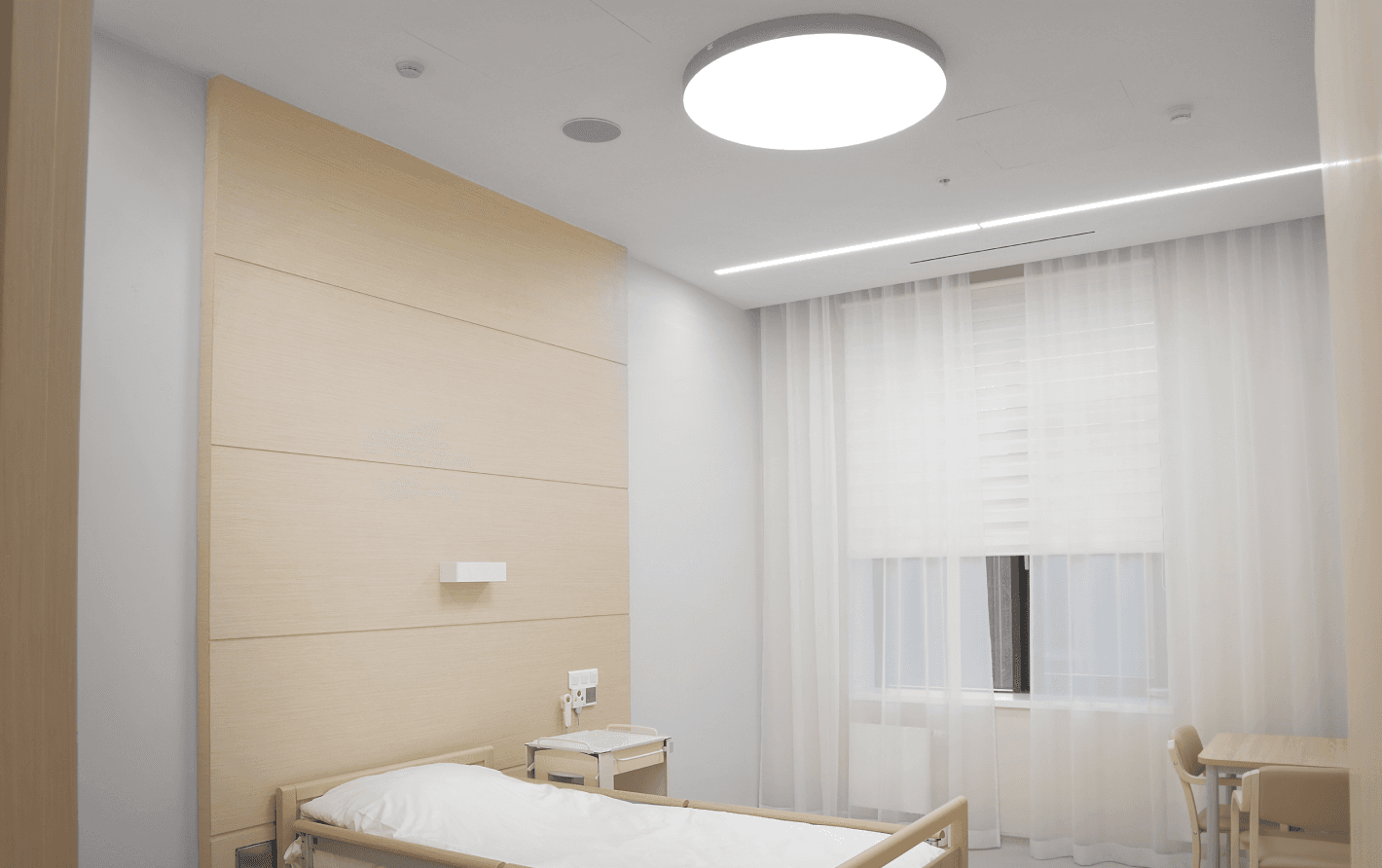hospital wards

hospital room lighting approaches
The light environment directly affects the well-being of patients, regulatory processes in their body and daily circadian rhythms. In particular, parameters such as the color of the radiation and the light flux affect the production of the hormones cortisol and melatonin.
Modern technologies allow flexibility in the design of lighting for hospital wards. For example, the use of controlled lamps with variable color temperature makes it possible to adapt the lighting installation to the current needs of the patient. Using this solution, it is possible to simulate the natural solar cycle in a hospital ward (which is especially important in the cloudy season or in northern latitudes), which contributes to the speedy recovery of patients.
In addition to general lighting in hospital wards, lamps are used for bedside and emergency lighting. Bedside lamps are devices for individual use, designed to provide maximum comfort for the patient. In addition to creating a comfortable light environment, such devices can carry an additional load, for example, have a medical staff call button or a socket for connecting electrical equipment on board.
Duty lamps are needed to ensure the safety of the movement of personnel and patients at night - as a rule, they are installed at a height of 20 - 40 cm from the floor level by embedding into the wall. The emergency lights remain on continuously.
Modern technologies allow flexibility in the design of lighting for hospital wards. For example, the use of controlled lamps with variable color temperature makes it possible to adapt the lighting installation to the current needs of the patient. Using this solution, it is possible to simulate the natural solar cycle in a hospital ward (which is especially important in the cloudy season or in northern latitudes), which contributes to the speedy recovery of patients.
In addition to general lighting in hospital wards, lamps are used for bedside and emergency lighting. Bedside lamps are devices for individual use, designed to provide maximum comfort for the patient. In addition to creating a comfortable light environment, such devices can carry an additional load, for example, have a medical staff call button or a socket for connecting electrical equipment on board.
Duty lamps are needed to ensure the safety of the movement of personnel and patients at night - as a rule, they are installed at a height of 20 - 40 cm from the floor level by embedding into the wall. The emergency lights remain on continuously.
general recommendations for choosing equipment
- Lighting devices for lighting hospital wards should provide the most comfortable light environment - glare and pulsation of the light flux must be minimized.
- To create a comfortable light environment, the color rendering index is also important - it is not recommended to use lamps with Ra less than 80 for lighting hospital wards
- It is good practice to use devices with a variable color temperature (in the Lighting Technologies range they are marked CH CF) and controllable for lighting hospital wards.
- For individual lighting, wall-mounted bedside lamps should be used, which can also be equipped with additional functions.
- In hospital wards, it is necessary to organize emergency lighting, using special lighting devices for this.
we will help you solve your problem